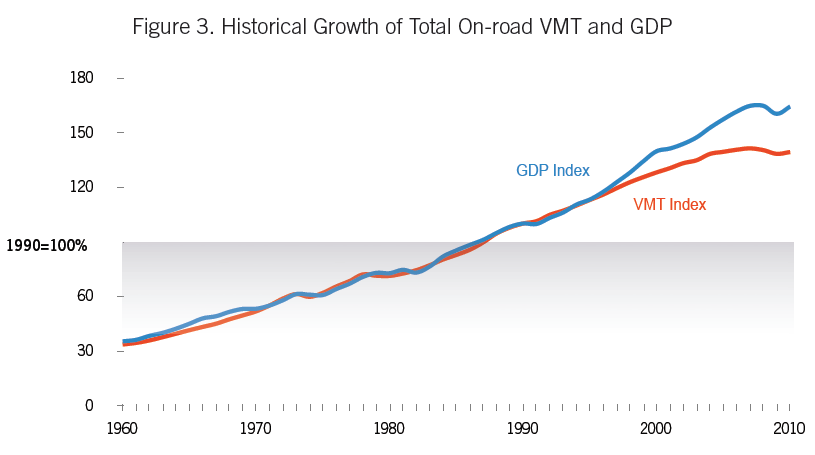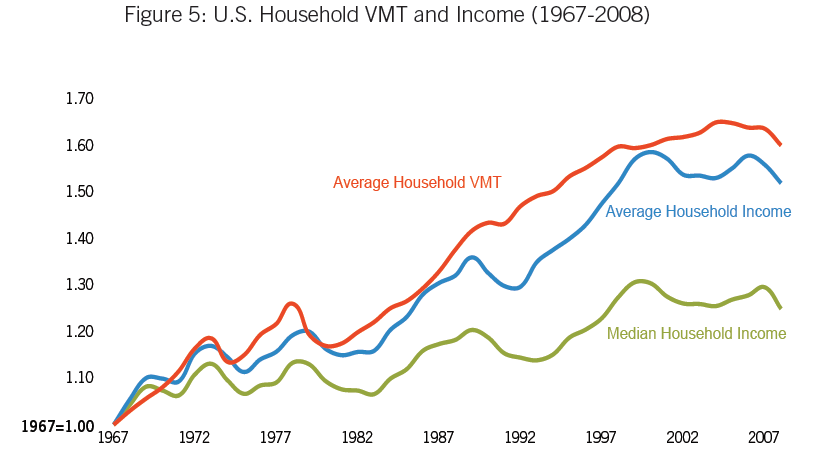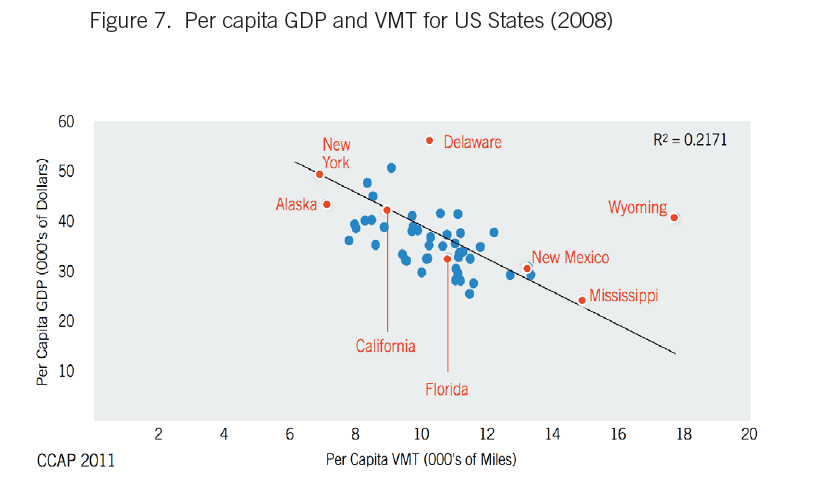|
Trends
Smart Growth, Driving and Economic Health
Transportation is vital to the production and exchange of goods and services.
But in our transforming economy, economic activity can happen in myriad of ways;
vehicles and people in motion are only a part of a much greater whole. Although
vehicles miles traveled (VMT) rose along with gross domestic product for decades
there is now evidence that the relationship is changing (Figure 3).

According to U.S. Chamber of Commerce analysis, the importance of travel as a
component of the economy has been declining since the early 1990s, and is
expected to continue to decline through 2030 (Figure 4).

As VMT increases along with fuel and other vehicle costs, the hit to the
household budget expands, so that today transportation and housing together take
about half of every dollar earned. While vehicle travel per household increased
by 70% from 1969 to 2001, incomes for 60% of American households increased only
18%. These Americans drove substantially more, but did not share proportionately
in income growth (Figure 5).

CCAP has dubbed travel that contributes little or
nothing to the economy “empty milesâ€. At the state level, we found a negative
relationship between vehicle travel and productivity; that is, many states with
higher VMT per capita actually performed worse economically that those with
lower rates of driving (Figure 7).

Ten common-sense principles that many urban planners, public officials, real
estate professionals, architects and designers subscribe to, can guide new
development in ways that improve accessibility and alleviate many of the
problems of sprawling land use, while enhancing quality of life. Three rigorous
studies in the past few years found that communities following smart-growth
strategies either have succeeded in, or have the potential to, reduce their
citizens’ driving up to 60 percent. In Growing Wealthier we walk through each
smart growth principle, identifying a variety of economic and prosperity
benefits. Following are some key examples. |